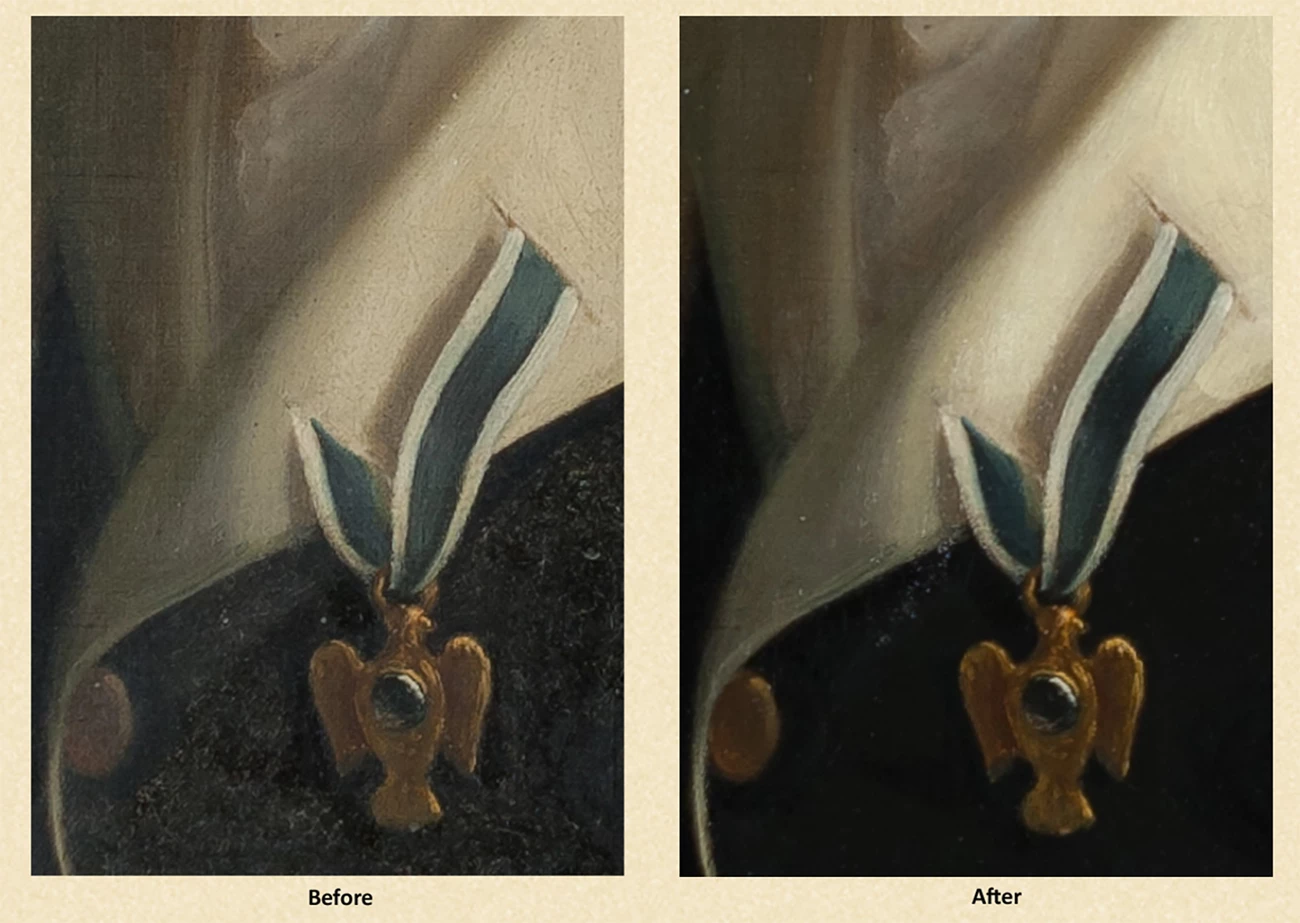Part of a series of articles titled Curious Collections of Fort Stanwix, The 19th & 20th Centuries.
Article
Peter Gansevoort Portrait

Cuyler Ten Eyck/National Park Service
Men Of Dutch Descent
Colonel Peter Gansevoort was the commanding officer at Fort Schuyler (Stanwix) during the Siege of 1777, who famously wrote that he would “defend this fort and garrison to the last extremity.” He came from a long line of Dutch colonists. One grandson, Guert Gansevoort became an American Naval officer, serving 45 years, through the Mexican-American and American Civil Wars. Another grandson, Herman Melville, became famous in his own right after penning the novel Moby Dick.
Cuyler Ten Eyck was born circa 1866 and died at his home in New York City in 1938. His obituary states that he was the proprieter of the Ten Eyck Garage and a cigar stand at the New York State Capitol Builiding, and was "known to hundereds."** He was also apparently an artist and is responsible for the portrait of Peter Gansevoort seen here. Yet it is nearly impossible to find images of his other works. Other than that, not much is known about his life.
**From the New York Times, April 3, 1938

Collection of the U.S. House of Representatives
Who Were the Ten Eyck's?
Though not much is known about Cuyler himself, one of his brothers, Peter Gansevoort Ten Eyck, served in various political positions including as a U.S. Congressmen for New York State and as state agricultural secretary. Another brother, Albert, was a U.S. bancruptcy arbitrator.
The Ten Eyck family was one of the earliest Dutch families in New Amsterdam (evenutally known as New York City). Patriarch Coenraedt Ten Eyck led the family from Germany, to the Netherlands, to North America, finally settling in the Dutch Colony of New Netherlands in the 1630's. He became a shoemaker, tanner, and landowner in a time when wealth dictated status.
Over the centuries, many of his decendants rose to positions of prominence. Numerous mayors, politicians, officers of the law, soldiers, artists, atheletes, and even a San Francisco Goldrush 49er can be counted amongst their ranks. It is clear from both family naming conventions and history that the Ten Eyck and Gansevoort Families not only intermingled and intermarried over the course of history, but also shared an admiration of each other.
A Portrait of a Portrait?
There is only one known image of Gansevoort made during his lifetime. It was painted circa 1794 by reknowned artist Gilbert Stuart. That means, given the fact that their lives had no overlap, Cuyler Ten Eyck must've made his portrait with the Stuart image in mind.
But why would one make a portrait of a portrait? There are many reasons, including convienence and the wish to own art; as it would seem cheaper and easier to make or commission a derivative than to purchase an original piece. In this instance, however, the connection between the families seems to be the most likely reason for this creation. A tribute to the man for whom Cuyler's brother was named and a pillar of his family's past.
The painting itself is in the 19th Century American style (known for "hagiography," or the practice of idealizing the subject's features) in the latter half of that century. It is oil on canvas and the frame is brass leaf and silver leaf with yellow varnish.

National Park Service
Preserving an Image of the Past
In 2013, the Ten Eyck Family donated the heirloom portrait to Fort Stanwix National Monument. Shortly after, conservation work began. The painting was sent to Massachusetts where trained conservators from the Williamstown Art Conservation Center cleaned and treated it. Besides general dirt accumulation, there was also flakey and cracked paint, a small tear, and a small scratch. Linen was added to the back of the canvas to stabilize the painting and to take pressure off the canvas which had been in the stretched position for over a hundred years. The new linen takes the pressure to limit further damage to the canvas and paint, preserving the painting. The frame was also cleaned and small portions of the ornament were restored.
In 2015, the portrait was sent back to park to be placed on display. In order to preserve it and its frame properly, it must rest on it's back instead of hang continuously. Therefore the portrait rotates in and out of public view instead of being on constant display. Currently it resides in the main park collections holding area, where is kept at a controlled humidity and temperature, and protected from damaging light.


Left image
A before image of the Gasnsevoort portrait before conservation efforts began in 2013.
Credit: National Park Service
Right image
An image of the Gansevoort portrait after the process of conservation in 2015.
Credit: National Park Service

National Park Service
Last updated: December 16, 2024
